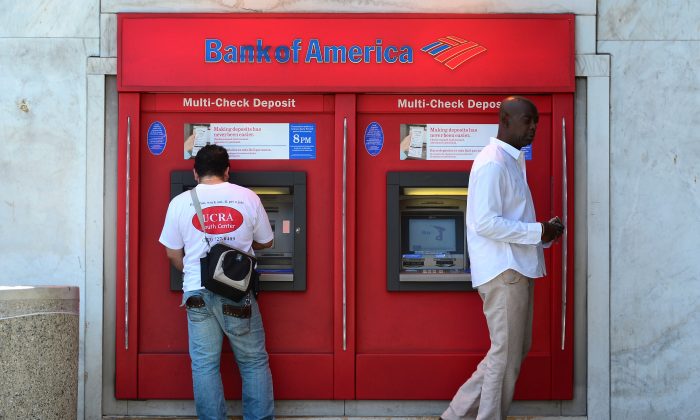By Jack Phillips
Some financial experts weighed in on whether Americans should feel worried about the safety of their money amid several bank collapses in recent days as some consumers expressed concerns about their deposits, their bank, and the American banking system.
While President Joe Biden said Monday that “Americans can have confidence that the banking system is safe. Your deposits will be there when you need them,” that hasn’t stopped people from speculating on social media and elsewhere. At the same time, the Federal Reserve, U.S. Treasury Department, and Federal Deposit Insurance Corporation have said they moved quickly to stop contagion after Silicon Valley Bank and Signature Bank collapsed in a bid to ease possible “bank runs.”
Bank Runs?
Banks, which are for-profit entities, unlike credit unions, take customers’ deposits and invest that money elsewhere—meaning, if every single customer at a certain bank wished to withdraw all their money at the same time, it’s likely the bank wouldn’t have enough cash on hand to do so.
“When everyone wants to withdraw money at the same time, the bank doesn’t have the reserve to do that and they go belly up, essentially,” Tomas Philipson, a professor of public policy studies at the University of Chicago and former White House economic adviser, told CBNC.
Philipson noted that in the past, people had to physically go to the bank and take out their cash, but now, it’s done electronically—meaning that it happens at a higher rate.
Financial Crisis?
“This doesn’t seem like a financial crisis, yet,” Jude Boudreaux, a CFP and senior financial planner at The Planning Center in New Orleans, told CNBC. “The two banks we are talking about right now specialized in riskier assets,” he said, referring to SVB’s investments in tech companies and startups and Signature’s specialization in cryptocurrencies. “The likelihood that this becomes a national wave of bank issues seems low.”
In a note, Goldman Sachs analysts said that the risk of contagion into the banking industry will be mitigated by the fact that the four big banks—JP Morgan Chase, Wells Fargo, Bank of America, and Morgan Stanley—don’t have the same exposure that SVB and Silverbank had. Goldman Sachs also said Monday it no longer expects the Fed to raise rates later in March.
FDIC Insurance
In the case of SVB’s collapse last week, many customers attempted to withdraw their deposits out of concerns about the bank’s health. Reports indicate that upwards of 85 percent of the deposits were uninsured, meaning they surpassed the FDIC threshold of $250,000.
Stacy Francis, a certified financial planner and president and CEO of Francis Financial in New York, noted that for other banks, there is a “possibility” that similar runs could occur. “This is happening, in part, because of the Federal Reserve’s sharp rise in interest rates,” Francis told CNBC, referring to actions taken by the Fed over the past year or so to curb inflation.
Carolyn McClanahan, a certified financial planner and founder of Life Planning Partners in Florida, however, said that customers who have less than $250,000 in any accounts shouldn’t worry. If they have more than $250,000 in a single bank, those people may want to communicate with a banker to split it into different accounts at different banks, she said.
“You may have a short time without access, but the government has very speedy processes to get you back to using your cash in short order,” said McClanahan to CNBC, adding, “Don’t use worry minutes.”
$620 Billion
However, total unrealized losses in the U.S. system were estimated by the Federal Deposit Insurance Corp. most recently at $620 billion. Its chairman, Martin Gruenberg, confirmed that figure days before SVB’s collapse in a speech.
“The current interest rate environment has had dramatic effects on the profitability and risk profile of banks’ funding and investment strategies,” he said, according to an FDIC transcript. “First, as a result of the higher interest rates, longer term maturity assets acquired by banks when interest rates were lower are now worth less than their face values. The result is that most banks have some amount of unrealized losses on securities. The total of these unrealized losses, including securities that are available for sale or held to maturity, was about $620 billion at yearend 2022. Unrealized losses on securities have meaningfully reduced the reported equity capital of the banking industry.”
Some analysts noted that banks may see that they have less cash on hand than they thought because their securities are worth less.
“Many institutions—from central banks, commercial banks and pension funds—sit on assets that are worth significantly less than reported in their financial statements,” Jens Hagendorff, a finance professor at King’s College London, told CNN last week. “The resulting losses will be large and need to be financed somehow. The scale of the problem is starting to cause concern.”





